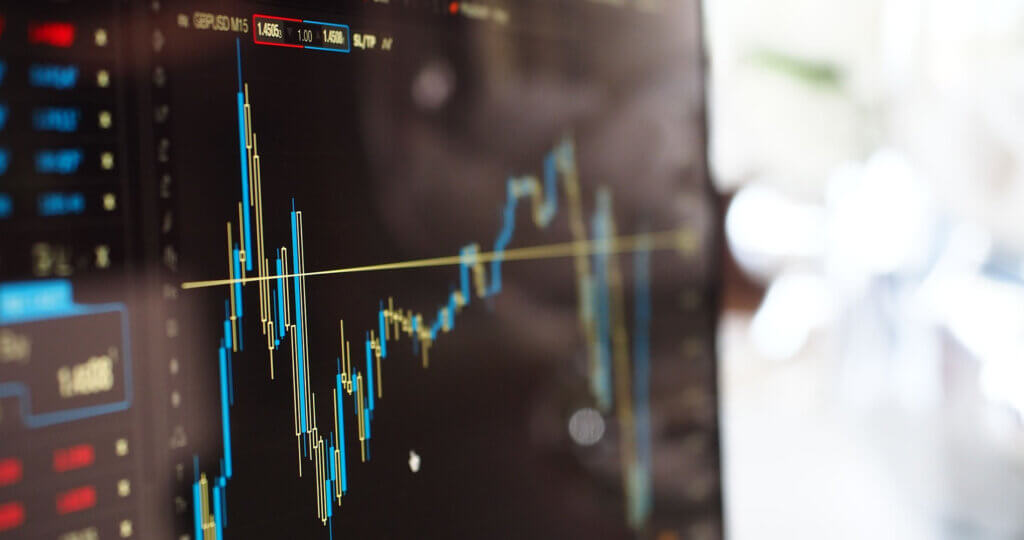“If you can keep your head when all about you are losing theirs…” –If by Rudyard Kipling
I won’t mince words: It was a bad quarter for the market and the economy. With that backdrop, it’s no surprise the American Association of Individual Investors announced in April that bearish sentiment among its members reached the highest level since 2009. What follows is an attempt to put this environment—bear markets, recessions and high inflation—into historical context and evaluate whether it warrants portfolio repositioning. It also includes some comments about our performance and current investments. Though our portfolio returns lagged some of our value peers last quarter, we are excited by how well our businesses performed and believe that bodes well for future stock performance.
At Oakmark, we are long-term investors. We attempt to identify growing businesses that are managed to benefit their shareholders. We will purchase stock in those businesses only when priced substantially below our estimate of intrinsic value. After purchase, we patiently wait for the gap between stock price and intrinsic value to close.
Bear Market
On Monday, June 13, the S&P 500 Index fell 3.9% to 3750, bringing the decline from its January 3 record high to 21.8%. The media focused on the market being down more than 20%, meaning this decline was now a “bear market.” Financial professionals in the media advised investors to act “appropriately.” What that meant went unexplained, but the implication was that, with the market down so much, you need to be more careful.
Can history help us decide how we should invest in a bear market? Over the 77 years for which we have daily price data for the S&P 500, there have been 12 bear markets. Let’s look at the previous 11. The median bear market low occurred 117 days following the day the market was down 20%. The shortest time to the ultimate bottom was one day after falling 20%, which occurred in October 1957. The longest was more than two years, September 1946 to June 1949. If this bear market behaves like its predecessors, it is a coin-flip whether it bottoms by October.
What were equity returns immediately following bear markets? For the 11 previous bear markets, the median additional decline after the market was down 20% was another 10% loss. Despite those declines, two years from the time the market first hit down 20%, the median gain was 33%. That statistic is especially interesting because the two-year price increase from a random purchase date has been just over half as much, 17%. Perhaps the advisors who are now urging extra caution are being driven by their emotions rather than data.
Recession
On April 28, the U.S. Commerce Department’s Bureau of Economic Analysis reported that first-quarter GDP grew at 6.5%. On the surface, that looks like a nice increase from the sub-5% growth over both the past 5 and 10 years. But the GDP number that merits the most attention is real GDP, where the growth is adjusted for inflation. With first-quarter inflation running at 8.1%, the highest in more than 30 years, real GDP declined 1.4%. Economists attributed the first-quarter decline to high inflation, a high trade deficit and a decrease in inventory investment, saying that all three should improve throughout the year. But with the second quarter now in the rear-view mirror, it doesn’t look like the headwind has lessened. A recession is typically defined as two consecutive quarters of declining real GDP, so if the June quarter also declined, we are already in a recession. It’s probably 50/50. So, what should that mean for your investment strategy?
We looked at the 12 recessions that have occurred since 1945 (the period we have access to daily S&P 500 prices) to see the price change in the S&P 500 during the two years after it was known that a recession had begun. The median two-year price increase in the S&P 500 was 25%, and only one of the 12 periods showed a negative return. Remember that the median two-year price increase from random purchase dates during those 77 years was only 17%, so the recession returns were actually higher. If the late July announcement of the second-quarter real GDP turns out to be negative, don’t be bothered: There is no evidence that below-average investment returns are likely to follow.
Inflation
Inflation, as measured by the annual CPI, spiked above 8% in October 1973 and remained elevated until its peak of 14.6% in March 1980. It fell back below 8% in February 1982 and remained mostly under control until this past year. After troughing below zero in 2009, inflation increased to 5.4% in July 2021, and we were asked to believe that it was caused by the Covid-19 pandemic and would prove to be transitory. The steady climb of inflation to 8.6% in May of 2022 is stretching the meaning of the term “transitory.”
High inflation almost always leads to higher interest rates, which erode the value of long-duration assets because they make future cash flows less valuable. Bonds, with their fixed interest payments and maturity values, are the hardest hit. Businesses can offset inflation by raising prices, but historically that has only been a partial offset. We expect our portfolios to perform better than average during higher inflation because we own energy companies that benefit from higher oil prices and banks that profit from a larger spread between their lending and deposit rates. Further, our portfolios have P/E ratios significantly lower than the S&P 500, meaning our “duration” is less than the market’s, diminishing the value reduction caused by higher rates.
If inflation is a negative for equities, does that mean we should sell stocks when inflation is high? We went back to our 77-year data on S&P 500 prices and examined what the two-year returns were following inflation rising above 8%. Before this quarter, there were only five periods since 1945 when inflation exceeded 8%. An investor purchasing the S&P 500 following the announcement that the trailing annual CPI increase was above 8% and holding for two years showed a median price increase of 17%, the same as for a random two-year period over the past 77 years.
Though it is tempting to believe that one should sell stocks following the onset of a bear market, a recession or a period of high inflation, the data suggest otherwise. Stock prices anticipate future events before they occur. After the news is out, it is typically too late to profit. That’s what makes timing the stock market so hard, and that is why we suggest not trying. Instead, we encourage dollar-cost averaging for investing new capital and rebalancing the portfolio after large market moves.
Disappointing Quarter
The Russell 1000 Value Index fell 11% in the quarter, much less than the 17% decline for the S&P 500. We expected to compare more favorably to the Russell Value in a down market. What happened? Though we had a couple of company-specific disappointments, including Netflix, which is discussed in our Fund letters, we were most surprised by how poorly bank stocks performed. I said “bank stocks” instead of “banks” because I want to differentiate between business performance, which was good, and stock price performance, which wasn’t.
We believe that investors are simply looking at how much bank stocks declined in the past two recessions and anticipating a repeat performance. But we believe several facts make that unlikely. First, banks are much better capitalized today. As an example, Bank of America projects a higher tangible equity ratio at the bottom of the Fed’s severely adverse scenario than it had at the top that preceded the Great Recession. Second, banks have historically lowered lending standards before a recession to maintain revenue growth, but every bank we own today is committed to maintaining lending standards and measuring growth on a per-share basis, which gives credit for capital used to reduce shares outstanding. Third, banks today benefit from economies of scale much more so than in the past: Costs for regulatory compliance, fraud protection and digital banking, for example, do not grow linearly with size. That means that being big is a competitive advantage, which results in market share gains as measured by primary checking account relationships. Finally, valuations are extremely depressed: The S&P 500 sells for about 15 times expected 2023 profits, compared to the banks we own that range from 4 to 8 times expected earnings. Our short-term focus is always on business performance, which has been good, rather than stock performance, because in the long run, they converge.
Current Portfolio
To people who expect value investors to own only stodgy, low-growth businesses, there would be no surprise in seeing electric utilities in value portfolios. Those stocks fit the high-dividend, low-growth profile that is expected to be of little interest to anyone except value investors and, therefore, they are expected to trade at cheap prices. Why don’t we own any electric utilities in our portfolios? The average electric utility sells for 16.7 times consensus 2023 earnings adjusted for cash.1 Only 10 of the 55 stocks we own in Oakmark sell at higher P/Es. Twenty of our holdings have single-digit P/Es, and our portfolio’s median is 12 times cash earnings. We wouldn’t deem any of them inferior businesses to electric utilities.
Stocks we own that raise eyebrows for being “too growthy” for a value investor, such as Alphabet, Booking, Meta and Netflix, all sell at lower P/Es than the average electric utility. Value investing shouldn’t mean limiting one’s portfolio to below-average businesses. A value investor should be willing to buy any business, but only at a significant discount to its intrinsic value. When businesses like Alphabet, Booking, Meta and Netflix are priced as if they weren’t as good as electric utilities, the question should be, “How can a value investor not own them?”
In Closing
We encourage investors to take advantage of increased volatility and price declines. If you began the year with your assets appropriately divided across cash, bonds and equities, the large declines in bonds and equities have increased the percentage of your portfolio represented by cash. Investing some of that cash now would move you back to your target weightings. As value investors, most of the Oakmark managers are wired to buy opportunistically, especially after declines. So, last quarter most of us added to our personal investments in the Funds. In the Berkshire Hathaway Annual Report several years ago, Warren Buffett encouraged investors in bear markets to read the Rudyard Kipling poem If: “If you can keep your head when all about you are losing theirs…yours is the Earth and everything that’s in it.” You won’t regret re-reading it.
1We define cash-adjusted P/E as deducting net cash from the stock price and dividing by EPS after adding back the amortization of intangible assets. All references to P/E use 2023 consensus numbers.
The securities mentioned above comprise the following percentages of the Oakmark Fund’s total net assets as of 06/30/2022: Alphabet Cl A 3.1%, Bank of America 1.5%, Booking Holdings 1.5%, Meta Platforms Cl A 2.4% and Netflix 2.1%. Portfolio holdings are subject to change without notice and are not intended as recommendations of individual stocks.
The securities mentioned above comprise the following percentages of the Oakmark Select Fund’s total net assets as of 06/30/2022: Alphabet Cl A 10.2%, Bank of America 4.2%, Booking Holdings 3.1%, Meta Platforms Cl A 4.6% and Netflix 4.8%. Portfolio holdings are subject to change without notice and are not intended as recommendations of individual stocks.
The security mentioned above comprises the following percentage of the Oakmark Global Select Fund’s total net assets as of 06/30/2022: Alphabet Cl A 12.0%, Bank of America 3.1%, Booking Holdings 2.7%, Meta Platforms Cl A 0% and Netflix 2.5%. Portfolio holdings are subject to change without notice and are not intended as recommendations of individual stocks.
Access the full list of holdings for the Oakmark Fund here.
Access the full list of holdings for the Oakmark Select Fund here.
Access the full list of holdings for the Oakmark Global Select Fund here.
The Consumer Price Index (CPI) is a measure of the average change over time in the prices paid by urban consumers for a market basket of consumer goods and services. Indexes are available for the U.S. and various geographic areas. Average price data for select utility, automotive fuel, and food items are also available. https://www.bls.gov/cpi/
The S&P 500 Total Return Index is a float-adjusted, capitalization-weighted index of 500 U.S. large-capitalization stocks representing all major industries. It is a widely recognized index of broad, U.S. equity market performance. Returns reflect the reinvestment of dividends. This index is unmanaged and investors cannot invest directly in this index.
The Russell 1000® Value Index measures the performance of the large-cap value segment of the U.S. equity universe. It includes those Russell 1000® companies with lower price-to-book ratios and lower expected growth values. This index is unmanaged and investors cannot invest directly in this index.
The price to earnings ratio (“P/E”) compares a company’s current share price to its per-share earnings. It may also be known as the “price multiple” or “earnings multiple”, and gives a general indication of how expensive or cheap a stock is. Investors should not base investment decisions on any single attribute or characteristic data point.
EPS refers to Earnings Per Share and is calculated by dividing total earnings by the number of shares outstanding.
The Oakmark Funds’ portfolios tend to be invested in a relatively small number of stocks. As a result, the appreciation or depreciation of any one security held by the Fund will have a greater impact on the Fund’s net asset value than it would if the Fund invested in a larger number of securities. Although that strategy has the potential to generate attractive returns over time, it also increases the Fund’s volatility.
Because the Oakmark Select Fund and Oakmark Global Select Fund are non-diversified, the performance of each holding will have a greater impact on the fund’s total return, and may make the fund’s returns more volatile than a more diversified fund.
The stocks of medium-sized companies tend to be more volatile than those of large companies and have underperformed the stocks of small and large companies during some periods.
The information, data, analyses, and opinions presented herein (including current investment themes, the portfolio managers’ research and investment process, and portfolio characteristics) are for informational purposes only and represent the investments and views of the portfolio managers and Harris Associates L.P. as of the date written and are subject to change and may change based on market and other conditions and without notice. This content is not a recommendation of or an offer to buy or sell a security and is not warranted to be correct, complete or accurate.
Certain comments herein are based on current expectations and are considered “forward-looking statements”. These forward looking statements reflect assumptions and analyses made by the portfolio managers and Harris Associates L.P. based on their experience and perception of historical trends, current conditions, expected future developments, and other factors they believe are relevant. Actual future results are subject to a number of investment and other risks and may prove to be different from expectations. Readers are cautioned not to place undue reliance on the forward-looking statements.
All information provided is as of 06/30/2022 unless otherwise specified.






